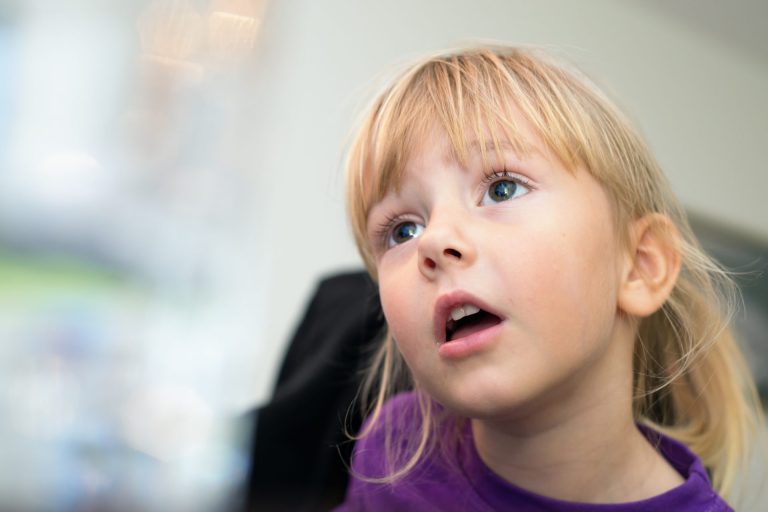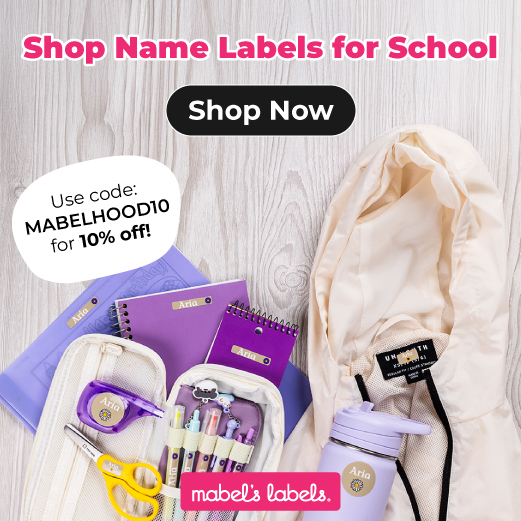I was in line at the grocery store when my daughter looked at me and, referring to the cashier, asked (loudly) “is that a boy or a girl?”
Cue the internal panic. Do I whisper? Redirect? Pretend I didn’t hear? These moments catch many of us off guard—not because our kids are doing something wrong, but because we want to get it right.
I remembered something a friend once told me: You don’t need all the answers. You just need one thing—kindness. (This was about people with disabilities, but the same rule can apply). So, I decided to model kindness in the face of curiosity or confusion – I taught my daughter that people are never something to be whispered about—they’re to be respected, always.
Why Kids Ask “Is That a Boy or Girl?”
Back to me—in the checkout line—trying to balance respect, accuracy, and the burning need to say something helpful before the moment passed. These questions aren’t rude; they’re honest. My daughter, like all kids, are still learning the world, and this is one way they try to make sense of it.
Gender is one of the earliest things kids notice. But what they’re really asking is: Where does this person fit? Are they like me? When we treat these questions with calm and curiosity, we allow our kids to explore and understand, without shame or confusion.
What to Say in the Moment (Real-Life Scripts)
It’s tempting to shush our kids or change the subject when they ask something awkward. But those moments are golden chances to model empathy and curiosity. Shushing sends the message that the person they’re asking about is too “taboo” to talk about—as if their identity is something to be hidden or ashamed of.
We don’t need a perfect answer to “is that a boy or girl?” —just a calm, kind one that keeps the door open for future conversations.
When Toddlers and Preschoolers ask, “is that a boy or a girl?”
“We don’t always know if someone’s a boy or a girl by looking at them. And that’s okay. What’s most important is that we’re kind.”
For School-Aged, More Curious Kids
“Good question. Sometimes people don’t look like what we might expect from a boy or girl. And some people feel a little bit like both, or neither. And that’s okay.
What’s important is that we respect who people say they are.”
I went with the latter (or something along those lines) I knew I didn’t need to identify or label the person my daughter was referring to—just keep the focus on kindness and respectful observation. This show the person you’re speaking of, that this is a safe and respectful place – they may jump in and talk about it. Either way, we showed kindness.
How to Talk About Pronouns with Kids
Once we left the store, I continued the conversation, we talked about pronouns.
Explaining pronouns can be really simple, especially if you start with the idea that pronouns are just words we use to help people feel seen and respected. Most kids already understand that they’re called “she” or “he” or “they”—and that people want to be called the right name. That’s my starting point.
I told my daughter:
“You know how we call you ‘she’ and your friend Elliot ‘he’? That’s because that’s what feels right for each of you. Some people use ‘they’ because that’s what fits them best.”
Normalize it. I don’t over-explain. I keep it casual.
If I had not been so caught off guard in the store, I could have led by example and taught my daughter respectful ways to ask about someone’s pronouns.
“Hi! Just wondering—what pronouns do you use?”
“My child is learning about pronouns—can we ask how you’d like to be referred to?”
Showing my child that it’s okay to ask respectful questions—and that grown-ups can learn too—proves how easy and comfortable these conversations can be when led with kindness and respect.
Age-Appropriate Ways to Explain Gender Identity
I don’t have to dive into deep definitions to introduce the concept of gender identity, or answer the question ‘Is that a bor or girl?” It’s really just about helping kids understand that not everyone feels the same way on the inside as they might look on the outside—and that’s okay. Kids are often more far open-minded than we give them credit for (and far more open-minded and loving than many adults I know)
For Toddlers and Preschoolers
“Some people are boys, some are girls, and some people are a bit of both—or neither. Everyone is different, and we treat everyone how we would like to be treated.”
For Elementary-Aged Kids
“Most people are assigned boy or girl when they’re born, but as they grow up, they might feel different inside. It’s not something we can always see—and it’s not something we need to fix. We just treat people with kindness.”
If they ask, “But what ARE they?” respond:
“That’s up to them. The best way to know is to listen to what they tell us about themselves, and respect that”
What If You’re Unsure—or Don’t Have All the Answers?
I’ll admit—there have been times when my daughter has asked something, and I had no idea how to answer. But one of the most powerful things I can say as a parent is:
“I don’t know, but I’m glad you asked. Lets find out together!”
I’m showing her that learning doesn’t stop with grown-ups—and that questions are welcome, being curious, and learning is a good thing!. I know that I don’t have to be an expert. I just have to be open to learning and respecting.
It’s Simple: Keep It Kind
When my kids ask these types of questions, I remind myself: this is a good thing. They’re noticing, they’re thinking, and they’re trusting me enough to ask. That’s parenting gold. I don’t need a flawless answer. I just need to be someone who listens, models empathy, and isn’t afraid to say, “That’s a good question.”
I’m not just teaching my daughter about gender—I’m teaching her how to be a kind, respectful human in a diverse world. And that? That matters way more than me getting every answer right.


